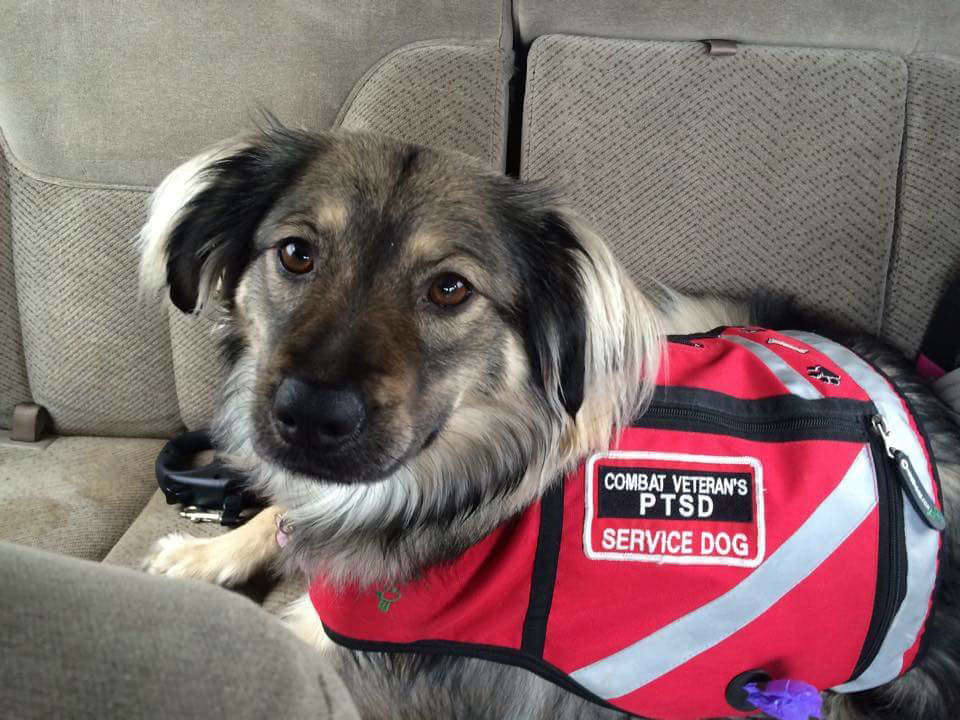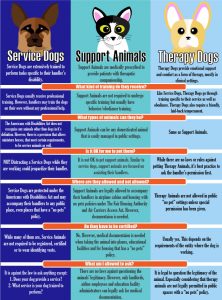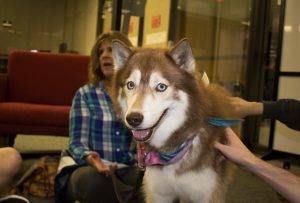
Emotional support animals and service dogs spotted on campus

Take a look around the halls, or perhaps in a classroom. You just might see furry little canines accompanying their two-legged companion around UHCL.
If you have seen them on campus, you might have wondered why and if dogs were even allowed in classrooms. In most cases, those four-legged furry buddies are of the service kind. They specialize in, but are not limited to, the trained detection of symptoms their owner might be showing. Once detected, they are able to help in whichever way makes their owner feel comfortable.
Service dogs are allowed to accompany their owners anywhere the public is allowed to go. Service dog owners are not required to provide any paperwork pertaining to the status of their dog. However, there are questions a person can ask to prove a dog is indeed of service. If still unsure by the owner’s answers, documentation may then be requested.

The Americans with Disabilities Act (ADA) defines only dogs, and in some cases miniature horses, as service animals. There are, however, some cases where the dogs are not trained service animals, but what is called an emotional support animal. Emotional support animals can be just about anything your mind can think of, within reason of course, but are most often dogs. And while in some cases they might look the same, service and emotional support dogs are two very different things.
“Service dogs, as defined by the Department of Justice, have to be trained,” said Gavin Steiger, director of disability services. “If it is not trained to perform a certain task, it is then not considered a service animal. Emotional support animals are not trained to do anything; they are strictly there to make their owner feel good.”
Emotional support animals provide comfort for their owners, they are not required to be trained, or to perform a specific task. They do, however, help those with anxiety, emotional or psychiatric problems but are not specifically trained to detect those symptoms. For an animal to qualify as an emotional support animal, it must be registered with a mental health professional.
Both service animals and emotional support animals are protected but by different entities. Service animals are protected by the ADA under the Department of Justice, while emotional support animals are covered by the Fair Housing Act under Housing and Urban Development, separate from the Department of Justice, and the Air Carrier Access Act (ACAA).
While service dogs are allowed to accompany their owners anywhere the public is allowed to go, emotional support animals are designated to residences where pets might otherwise not be allowed or airplanes.
Steiger said that if you do happen to see a dog walking the halls of UHCL, it is most likely a service dog.
“While service animals are allowed to go anywhere the public can go, per ADA, emotional support animals are confined to residence halls,” Steiger said.
Since UHCL does not yet have a residence hall, people probably will not see any emotional support animals on campus unless for a specific event such as Study Paws or Murphy, the therapy dog.

“Study Paws is meant to help students relieve some stress throughout the semester from studying and exams,” said Kelly Sandvig, library associate at the Alfred R. Newmann library. “Students come in smiling and leave laughing.”
An exception to allowing a support animal in the classroom can be made if certain criteria are met.
“There are a few exceptions however… emotional support animals have to be registered with Disabilities Services, and a student must show the need for one, with reasonable accommodation under the ADA,” Steiger said.
Steiger also said that the student must provide evidence he or she cannot perform at the level of his/her peers without the emotional support animal, and only then would Disability Services consider the acceptance of a non-service animal in classrooms and other academic buildings.
It also must be noted that Disability Services is not the compliance police nor do they patrol the halls looking for such animals not allowed to be on campus, but if they come in contact with someone with an emotional support animal they will step in and consult with them.
“If there is an animal on campus being disruptive or aggressive, and someone brings it to our attention that an animal that is doing something it should not be doing, then we might step in and say let’s try to figure this out,” said Steiger. “If it is not a service animal then we might have to get the police department or maybe the ADA coordinator who is responsible for campus-wide compliance.”
